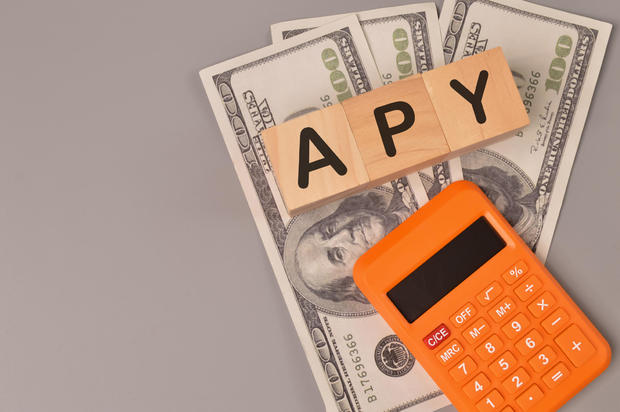What is annual percentage yield (APY)?
When you're shopping for a financial product like a savings account or CD, it can feel like you have to learn a new language to make sense of your options. Banks love to toss around terms like "APY" and "interest rate," but without fully knowing what they mean, it can be difficult to make the most informed decision.
Fortunately, these terms aren't difficult to understand. In this article, we'll define what APY is, explain why it matters and give you some tips on how to earn the most interest you can on your savings.
Check out today's savings rates here to see how much more you could be earning.
What is annual percentage yield (APY)?
Annual percentage yield, or APY, is the amount of interest you earn on your savings in a year, expressed as a percentage.
APY takes into account how often interest is compounded and added to the account. Compound interest simply means that over time, you earn interest on both your principal balance and the interest you've already earned.
Interest may be compounded daily, monthly or quarterly, depending on the account you choose. The more frequently interest compounds, the faster the account balance grows. Therefore, the higher the APY, the more interest you'll earn on your savings.
Compare current savings interest rates online now.
APY vs. interest rate
While interest rate and APY sound similar, there's a slight difference between them. The interest rate is the percentage of your savings account balance you'll earn in interest over the year, while the APY factors in compounding.
In other words, APY accounts for the interest you earn on your interest. This makes it a more accurate representation of how much you'll earn over the course of a year.
For example, say you open a savings account with an initial deposit of $5,000 and an annual interest rate of 4.00%. After one year, if you make no further contributions, you'd earn a total of $200 in interest without compounding. However, if interest is compounded monthly, you'd earn $203.71. If it's compounded daily, you'd earn $204.04.
Calculating APY
Your bank calculates APY for you and adds the correct amount of interest to your account each compounding period. But if you're a math enthusiast who likes seeing things broken down, the formula for calculating APY is:
APY = (1 + r/n)^n - 1
In this formula, "r" is the interest rate and "n" is the number of times interest is compounded annually.
For example, if you have an interest rate of 2% and interest compounds monthly, the APY would be calculated as:
(1 + 0.02/12)^12 - 1 = 2.02%
Why APY is important
APY helps you compare savings accounts and CDs. The higher the APY, the more interest you'll earn. Even a seemingly small difference in APY can make a big difference in the long run.
For example, suppose you save $5,000 each in two accounts: one with an APY of 4.00% and another with an APY of 4.50%. Interest is compounded monthly for each account. After one year, the account with a 4.00% APY will have earned $203.71 in interest, while the account with a 4.50% APY will have earned $229.70.
The longer you keep money in your account and the more you deposit, the starker this difference becomes.
Start exploring your savings account options online here and start earning more money.
How to get the highest APY
To maximize your APY, follow these tips:
- Shop around: Different types of accounts offer different APYs, as do different financial institutions. Do your research and compare rates and terms to find the account that best fits your needs.
- Open a high-yield savings account: High-yield savings accounts offer rates that can be 12 times higher than regular savings accounts, especially if you opt for an online account.
- Choose a long-term CD: While savings accounts are a popular option for growing your savings, certificates of deposit (CDs) can offer even higher rates. However, they require you to leave your money untouched for a certain period (typically three months to five years), so they're best if you know you won't need to access your money for a while. Generally, the longer the term you choose, the higher the APY will be.
- Monitor your APY: Financial institutions may adjust their APY rates based on market conditions or changes in business strategy. So, keep an eye on your account. If you notice your APY has dropped significantly, consider searching for better rates, and don't be afraid to switch banks if you find a better deal elsewhere.
What APYs are available for CDs today? Find out here!
The bottom line
A high APY can help you grow your savings faster. Understanding what APY means, how it works and how to maximize its potential can help you reach your savings goals faster.
That said, APY isn't the only factor to consider when choosing a savings account or CD. Also consider account fees, minimum balance requirements and features that are important to you to find the product that best suits your needs.




